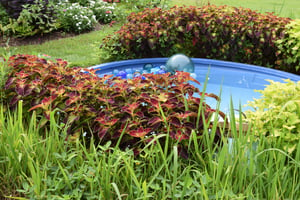
Best Practices for Watering your Garden
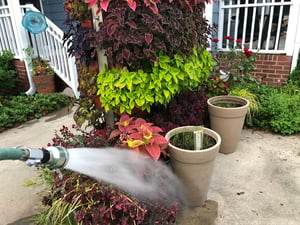
First, let me explain the term “best practices.” This simply refers to a method or technique that has been generally accepted as superior because it produces the best results. This is not saying that there are no other approaches to watering. But in my experience, the information I am sharing with you is what has worked best for me and other horticulture professionals.
Recently someone from Georgia asked me why I was watering my newly planted garden in the daylight. I realized there is a lot of confusion regarding how and when to water your landscape, garden, and containers. And even more confusion regarding “what is allowed.” Of course, every state is different, just to make a generally misunderstood practice all the more confusing. Here in North Carolina we don’t live with frequent water restrictions, like Georgia residents do.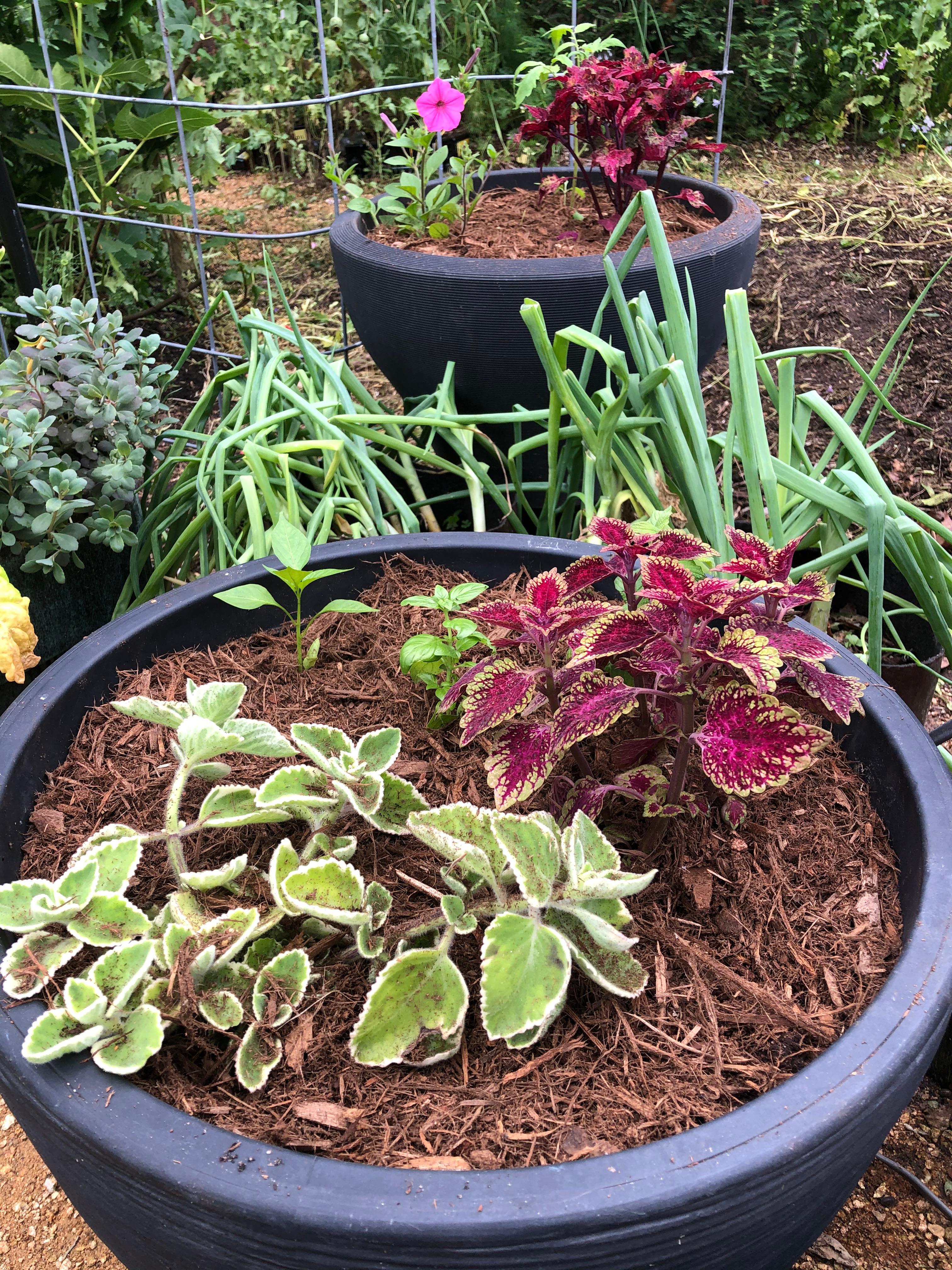
To help retain water in my containers I fill them with Soil³ compost and add a light layer of mulch around the plants.
Another confusing thing faced by home gardeners and landscape professionals alike, is that there are different best watering practices to follow depending on what you are maintaining. In my mind I evaluate a space and its watering needs in different categories:
- Landscape
- Garden
- Containers
My recommendation is to focus on deep watering always. When you water this way, your plants will be able to stretch their roots and absorb more water. This also means you won’t need to water as often. The way you water your lawn, WILL BE DIFFERENT from the best practices for watering everything else!

MYTH: You shouldn't water plants in the middle of the day.

For folks living in areas with water restrictions, my best advice is to pick up a hose and do some hand watering. The bottom line, your irrigation system, which is only allowed to run through the dark hours, will not provide enough water through the heat of the summer, especially if you aren’t getting regular rain. Hand watering, no matter where you live, is legal at any time of the day. So, don’t be afraid to drag a hose around and water individual plants that are showing signs of stress, including dropping leaves, yellow discoloration, and daily wilt. IF YOUR PLANT IS WILTING IT IS THIRSTY! WATER IT ASAP, NO MATTER WHAT TIME OF DAY!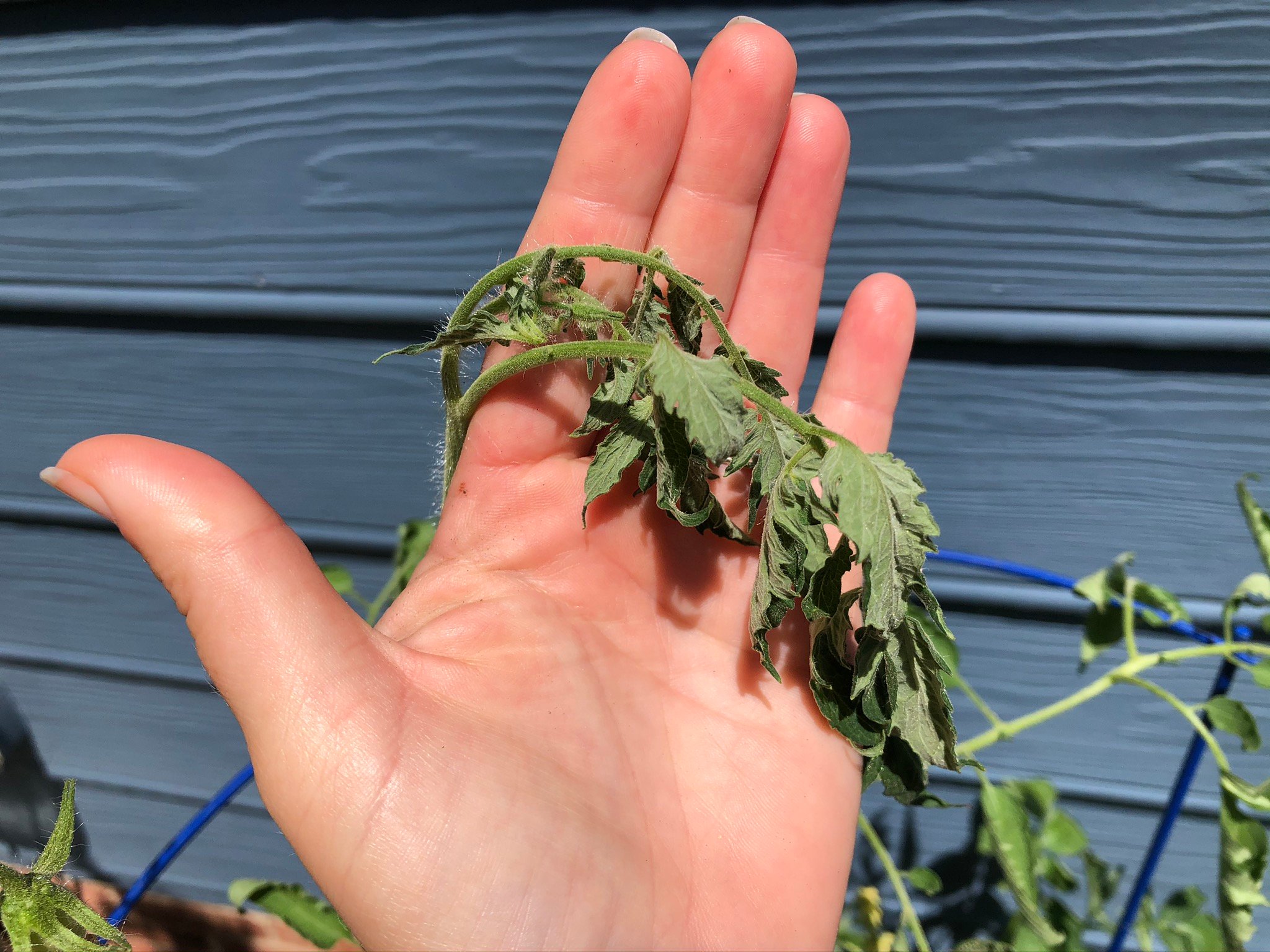
Note I did not say fill a watering can, because simply stated that is “pretend watering.” You need more than a gallon of water to revive a thirsty hydrangea. You don’t need to get the foliage wet, you need water to seep into the root zone, because that is how a plant absorbs water!
Read below for more specific advice regarding how to water your landscape, your veggie garden, and all your containers. And remember, each have unique needs, so there is no one size fits all answer. The best rule of thumb, if a plant is wilting in the summer, give it water ASAP!
Landscape Watering Recommendations

Sprinklers (like this Dramm model with adjustable spray patterns) are great for deep-watering landscape borders. Give them a heavy watering every few days - depending on temperature and rainfall.
To understand this, you first must acknowledge the difference between a LANDSCAPE and a GARDEN. Landscape, in my mind, indicates a planting space containing mostly ornamental trees and shrubs. Permanent plantings that do not change that are often surrounded by large open spaces of mulch. In these scenarios having a permanent irrigation system, either a “pop-up” or “drip” system works very well, because the ground plane is not fully engaged, and it is unlikely that the irrigation lines will be disturbed.
In the case of a traditional landscape, you need to water DEEPLY to encourage good root development. This means watering to at least 6” deep, but running the irrigation less frequently. Of course, soil preparation is the most important thing for your landscape, so if you have amended the space with Soil³ you will have to water less often. And, as always, how often you water is going to depend on temperature and local rainfall, so you do have to pay attention. There is no one-size-fits-all solution. Remember plants, even in the most basic landscape are living creatures that do need attention.

I use a sprinkler to water the foodscape border - but hand water my containers daily. Note the shutoff valve and water breaker nozzle at the end of my hose - my favorite for gentle watering.
A newly planted landscape will need more water compared to an established planting. I consider “newly planted” to be 1-9 months old. Fall plantings tend to establish more quickly because they have the cool season to settle in and will require less water the following summer. That is why landscape professionals always encourage fall installations versus spring and summer.
Though it is frequently advised to water in the morning, this is not for plant health purposes. Instead this is to help reduce evaporation and unnecessary water loss (important factors during drought). But, for me, I water 1) when I have time 2) when I see a plant is dry and I NEVER LOOK TO SEE WHAT TIME OF DAY IT IS!
Lawns are an exception - to reduce diseases, water in the mornings so the lawn has time to dry out before sunset. Read How and When to Water Your Lawn.
For more expert advice on how to water your landscape, check out this resource from N.C. Cooperative Extension.
Garden Watering Recommendations
In contrast to lawn and landscape watering, gardens are designed to be more interactive - my nice word for high maintenance. Here’s the deal, I garden because I enjoy spending time outside, growing plants. I want it to take time, effort, and thought. It would not be a hobby or passion if it did not require my attention. That is the difference between a GARDEN and a LANDSCAPE. Gardens are intended to be a place where you devote yourself, a place for planting, weeding, watering, and harvesting. A garden will NEVER STOP needing you. That is why I love it so much.
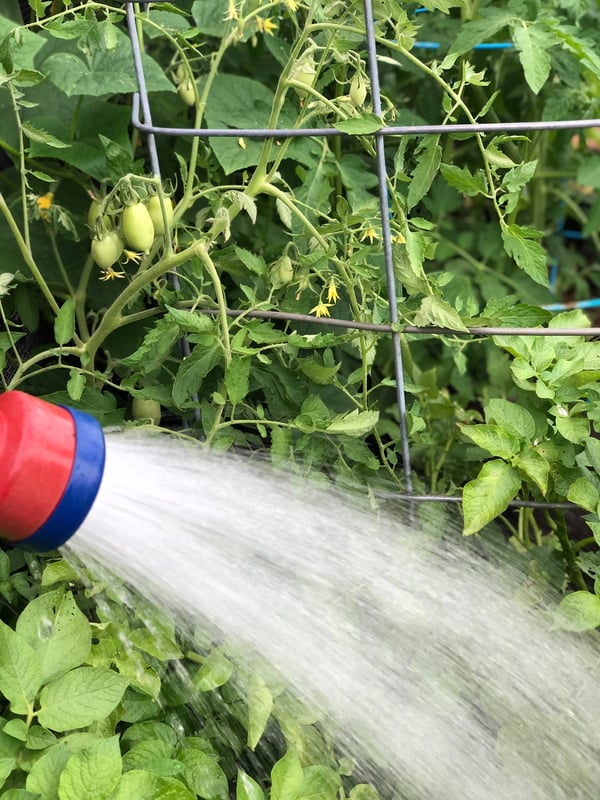 I grow most of my tomatoes in containers to avoid nematodes. They require daily watering.
I grow most of my tomatoes in containers to avoid nematodes. They require daily watering.
To that point, watering a garden is much more complicated. I have never found a standard irrigation system that works for my needs as a gardener. Drip irrigation is too easily broken when you are transplanting and reseeding and topdressing with Soil³ every few months. What I need is some sort of pop up system that is run in the middle of my lawn that rises to about 4’ tall and sprays EVERYTHING. I have yet to find this system. Or perhaps, I don’t have the budget for that system! 😉
When we broke ground on our current garden in January of 2011, I vividly recall explaining to the landscape contractor that we would not be investing in an irrigation system. He knew me well, and understood that typical irrigation would not accommodate my needs, but he made a wise suggestion, that I did not follow through on and have regretted every day since: “Add water spigots throughout your landscape to make hooking up to hoses easier.” If only I had thought this through, watering my expansive space would be so much simpler and I would not have hoses laying ALL OVER THE PLACE. So, I share this with you in hopes of making your gardening experience slightly easier.
Annuals Need Water Daily
The bottom line for garden watering is that annuals need a lot of moisture, especially through the heat of the summer. What does “a lot” mean? EVERY SINGLE DAY. My method is simple since I primarily hand water with a hose. I stop at every plant and pause for 20 seconds keeping the water concentrated at the base to ensure I am watering deep. The foliage does not need to get wet; the roots do! I water whenever I have time - morning, noon, or night. Frankly, the plants do not care what time it is. They just don’t want to be thirsty.
In the summer (June-Sept) I water EVERY SINGLE DAY unless ½” or more of rain has fallen within 24 hours. When I was traveling for work, this meant that my poor husband and neighbor kids were stuck with this duty. David has said on more than one occasion, “The garden doesn’t care that I just worked a 12-hour shift. It STILL had to get watered.” Yes, I am a lucky lady to have a husband that is such a good sport. And lucky for my crew, I am now home to keep up with these tasks!
Remember that most of our favorite food crops are annuals, so water your annual veggies every day too!
My Favorite Watering Tools
The Watering Wand
Hand watering is best done with a proper hose attachment. My favorite is called “Rain Wand” and is made by my preferred irrigation supplier, Dramm. Other options include hose end sprayers with different settings. 
- PRO TIP: Make sure you add a shutoff valve (the metal attachment pictured on the right side of the Rain Wand above), so it is easy to turn the water on and off and remove the hose end attachment if necessary. They come in plastic and metal and are easily found at any store selling hose parts.
Invest in a Quality Garden Hose
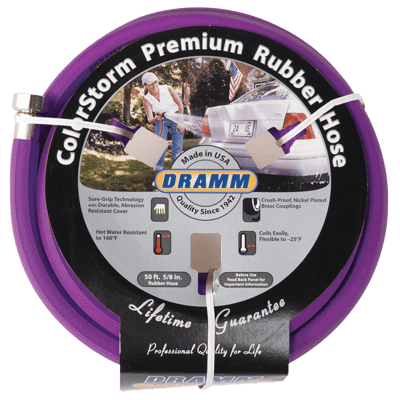 While on the subject of Dramm products, consider purchasing QUALITY hoses that are not the same color as snakes. This may sound silly, but for some of us, black hoses are startling! I love these colorful options because to my knowledge we do not have any purple snakes in the southeast. But more importantly these hoses are built to last. I never trust anything labelled as “kinkless” so just walkway from those junky hoses and invest in something that will last a decade - or longer.
While on the subject of Dramm products, consider purchasing QUALITY hoses that are not the same color as snakes. This may sound silly, but for some of us, black hoses are startling! I love these colorful options because to my knowledge we do not have any purple snakes in the southeast. But more importantly these hoses are built to last. I never trust anything labelled as “kinkless” so just walkway from those junky hoses and invest in something that will last a decade - or longer.
What About Sprinklers?
Yes, I use sprinklers and I highly recommend that you invest in a few good ones too. They really can make the job of watering so much easier. In some cases, I have hooked overhead sprinklers up to hoses with timers to ensure newly planted spaces get watered every 12 hours, regardless of my schedule. Remember, watering needs will evolve over the course of the summer, so pay attention and tweak as needed. But to simplify, my go-to timing for new plants is 20 minutes every 12 hours. Test your sprinkler's output because duration does depend on your water pressure.
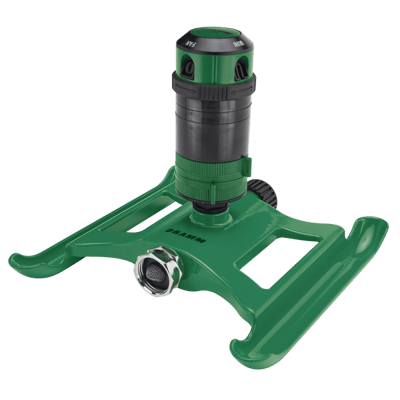 Not all sprinklers are created equal and you really do get what you pay for. I cannot recommend tri-pod sprinklers because they are not well balanced and frequently fall over. Obviously, I am writing from experience here. I have fallen deeply in love with a few low to the ground, easy to drag sprinklers, because they work well, and I never have to pick them up from toppling over! Check out some sprinkler options from Dramm.
Not all sprinklers are created equal and you really do get what you pay for. I cannot recommend tri-pod sprinklers because they are not well balanced and frequently fall over. Obviously, I am writing from experience here. I have fallen deeply in love with a few low to the ground, easy to drag sprinklers, because they work well, and I never have to pick them up from toppling over! Check out some sprinkler options from Dramm.
Container Watering Recommendations
Without question, containers will be your highest maintenance elements in the summer garden.
They need to be watered daily unless it has rained ½” or more. Even with saucers, containers drain and dry out faster than anything planted in the ground. So, be prepared!
Click to read why I love container gardening and see my other tips for container success.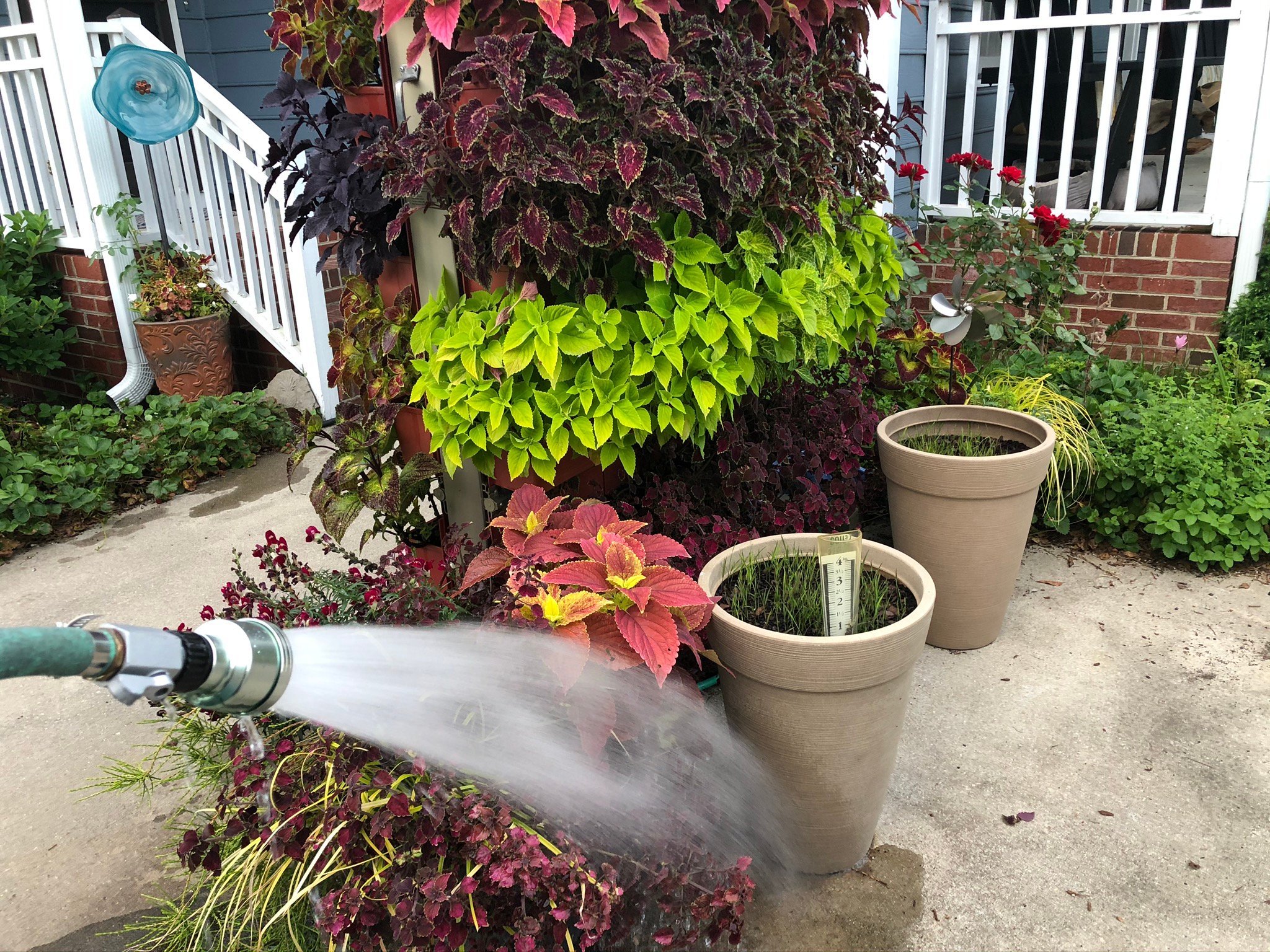
My LiveScreen (a living wall on wheels) planted with coleus has built in drip irrigation. But I use my favorite water breaker nozzle attached to a hose to water the other containers on the driveway daily.
Here are my personal tips for container watering:
- Growing medium: My first recommendation is to use Soil³ Veggie Mix as your media for containers. I am now in year two of using no traditional potting soil and my containers look better than ever! Also, the Soil³ Veggie Mix doesn’t dry out nearly as quickly and when I water it absorbs every drop. I can literally watch the plants respond to the compost getting hydrated as they perk up instantly! To this point, I also recommend applying a light layer of mulch on the top of your container plantings. This will help retain moisture and makes the pots look more professional.
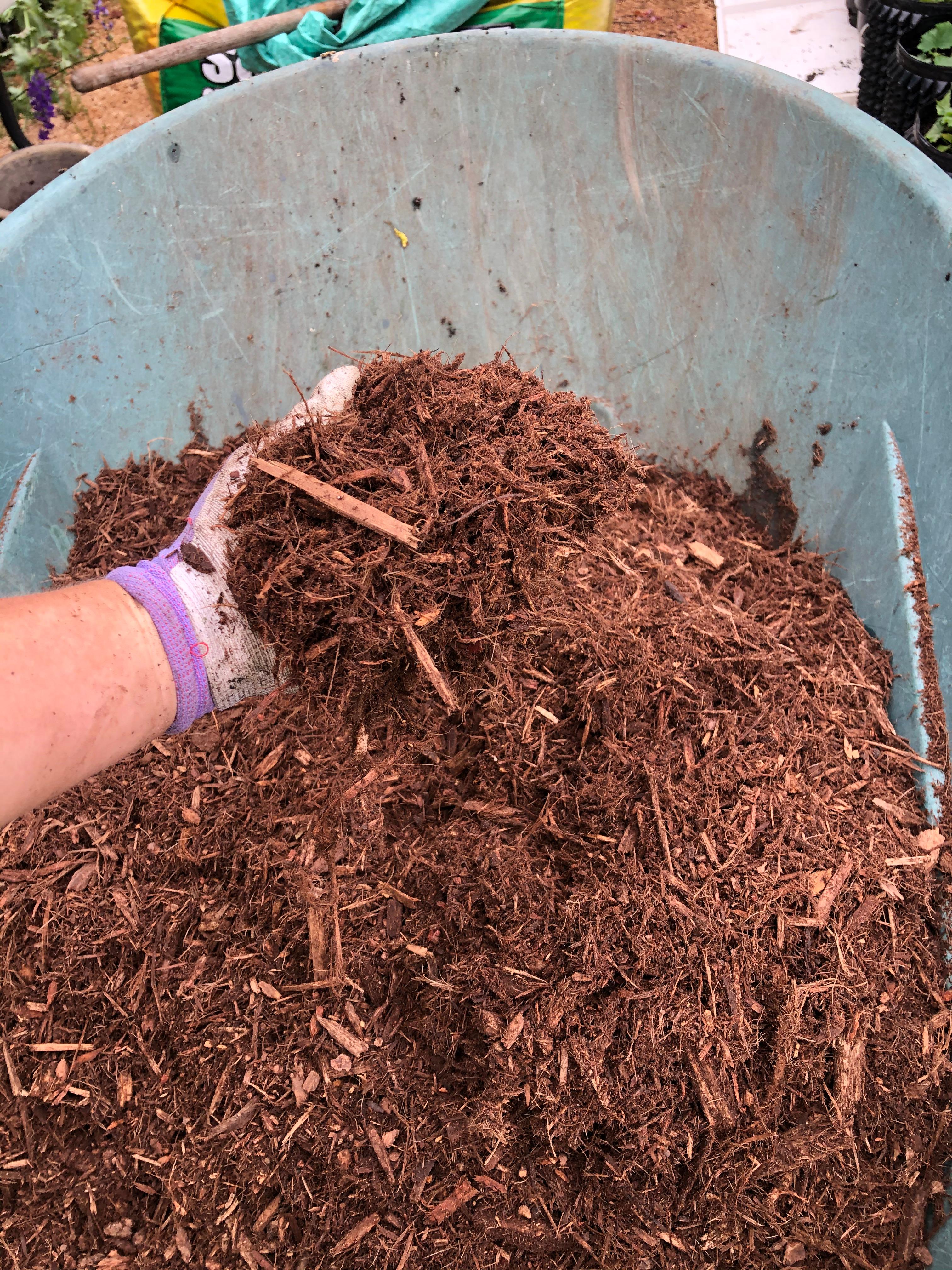
- Location: Place your containers in clusters near a water source so it isn’t a huge chore to give them what they need. I have containers grouped through-out my garden, but all within easy reach of a hose. It takes me approximately 45 minutes a day to water all my pots. Be mindful of your schedule and plant accordingly!
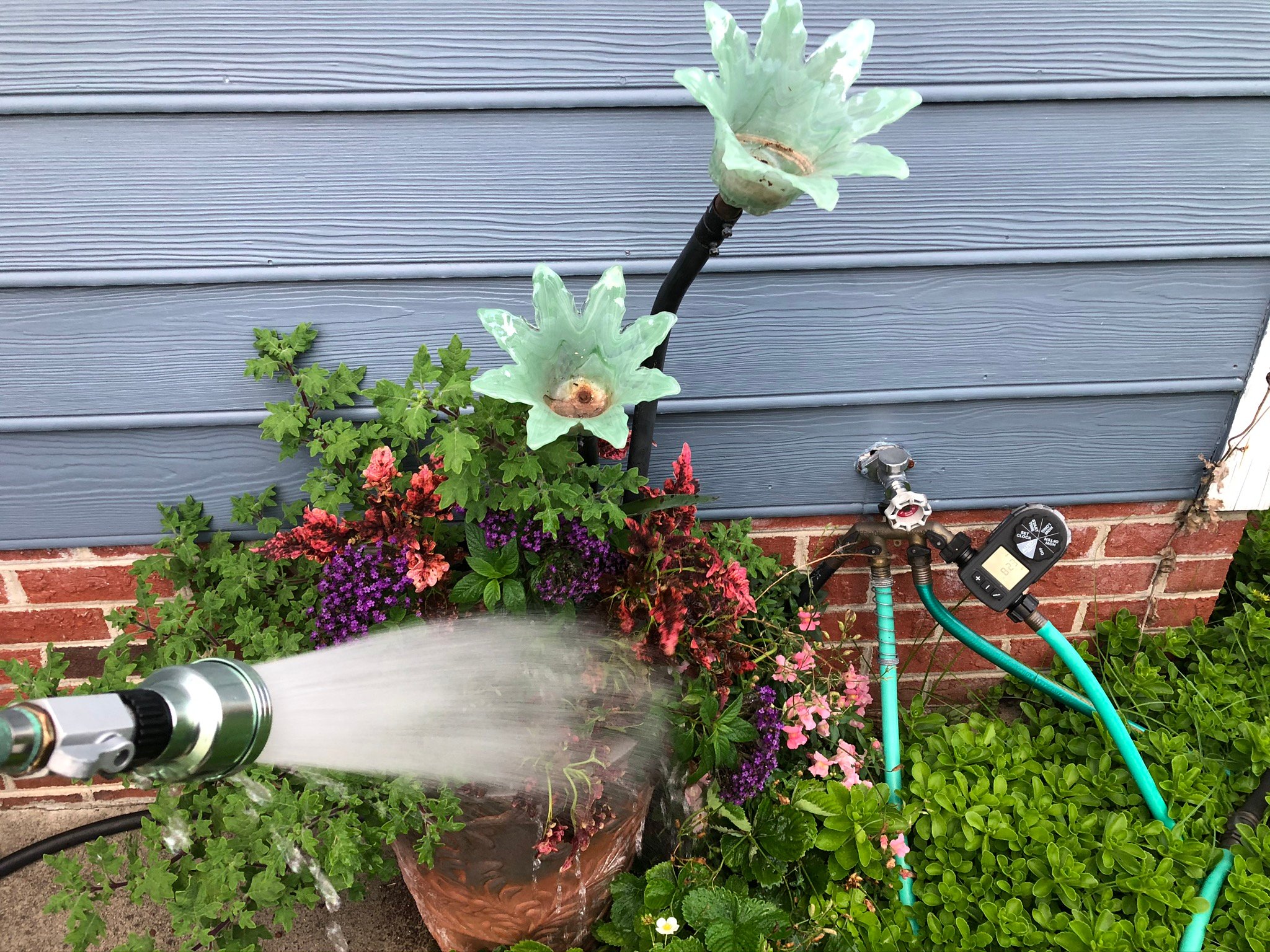
- Water by hand: Hand watering containers is better than setting up a sprinkler. This is also coming from experience. Often the oscillating sprinklers just do not put out enough concentrated water to adequately drench your container plantings. I prefer to water my containers with a water breaker nozzle attached to the end of the hose ensure the perfect pressure and an even application.
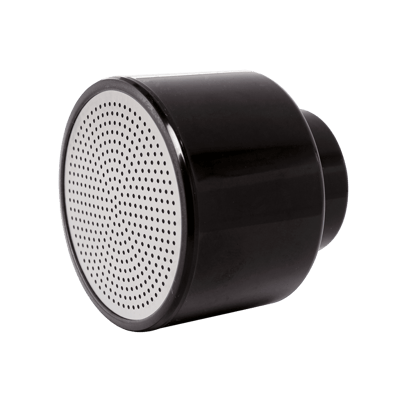
What About Drought?
Well, if there is one saving grace for 2020, it is that I have not been been enduring drought conditions - at least not thus far. That is not the case for everyone living in the southeast, unfortunately. These nightly thunderstorms are unpredictable and cannot be relied upon for blessing everyone with sustainable amounts of rain.
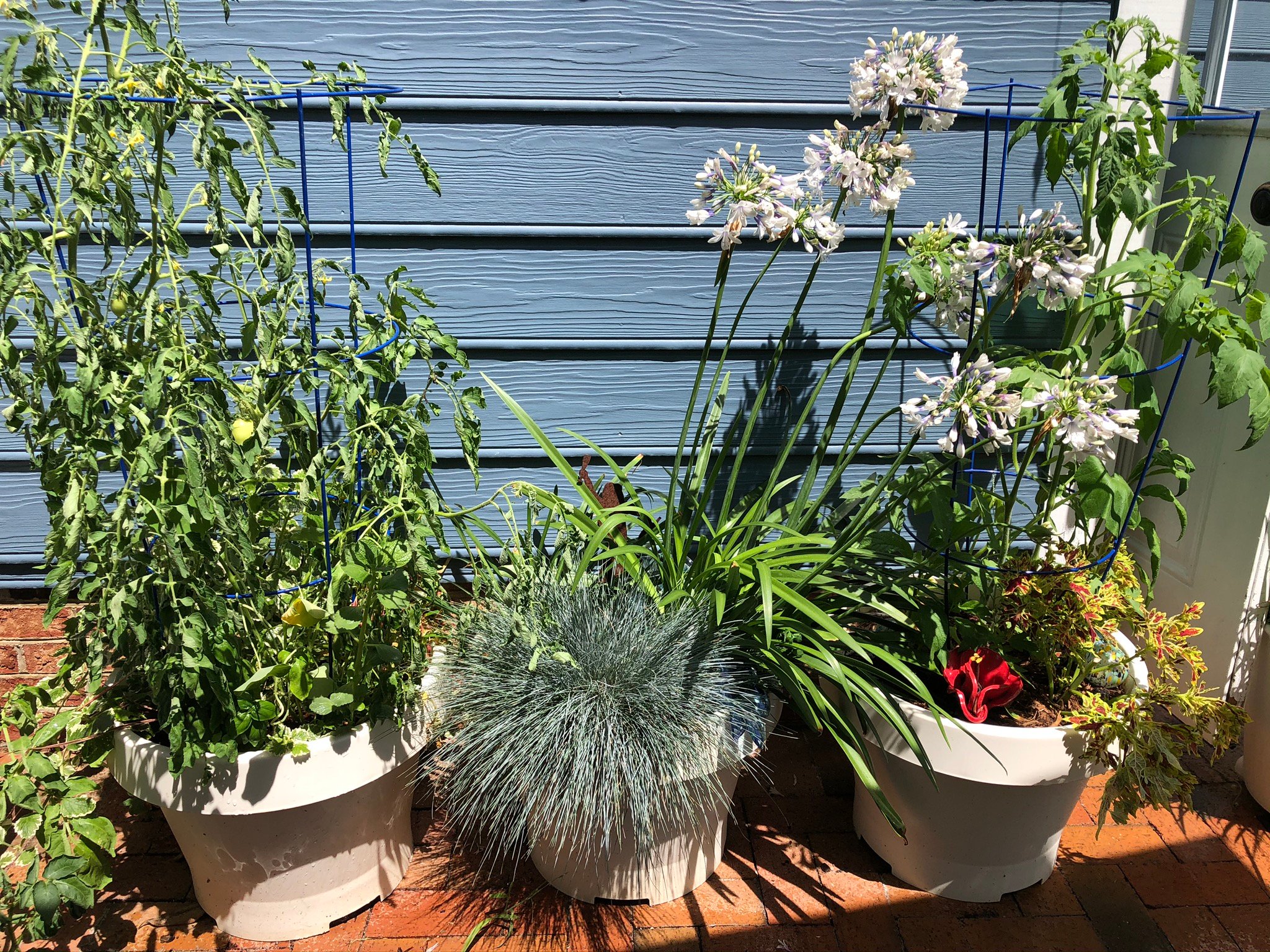 Technically “drought” is a prolonged period of abnormally low rainfall leading to a shortage of water. Sometimes that term gets mis-appropriated, like for instance when it is dry for a month or two, but we still have ample water supply and therefore no restrictions are in place, in North Carolina, at least. Sadly, since the epic drought of 2007, Georgia residents have been dealing with water regulations, that often lead to misunderstandings on how and when to water.
Technically “drought” is a prolonged period of abnormally low rainfall leading to a shortage of water. Sometimes that term gets mis-appropriated, like for instance when it is dry for a month or two, but we still have ample water supply and therefore no restrictions are in place, in North Carolina, at least. Sadly, since the epic drought of 2007, Georgia residents have been dealing with water regulations, that often lead to misunderstandings on how and when to water.
Watering through a drought is tricky and my best advice is to get prepared to see your plants wilt and even see some plants die. The last severe drought that I experienced here in central NC was the infamous period of 2007-2008 when the southeast had about 60% of the average rainfall, which caused reservoirs to dry up and cities and counties to enforce strict rules about home and professional water use. Generally watering lawns and landscapes is one of the first restrictions to be mandated, which is why selecting well-adapted, resilient species is always recommended by landscape professionals. How do you determine if a plant is “drought tolerant”? Well, that is a good question and there is no simple answer. Remember, for southeastern gardeners, a native plant may not actually be drought tolerant, as we have many bogs and low-lying areas, so that is not a guarantee.
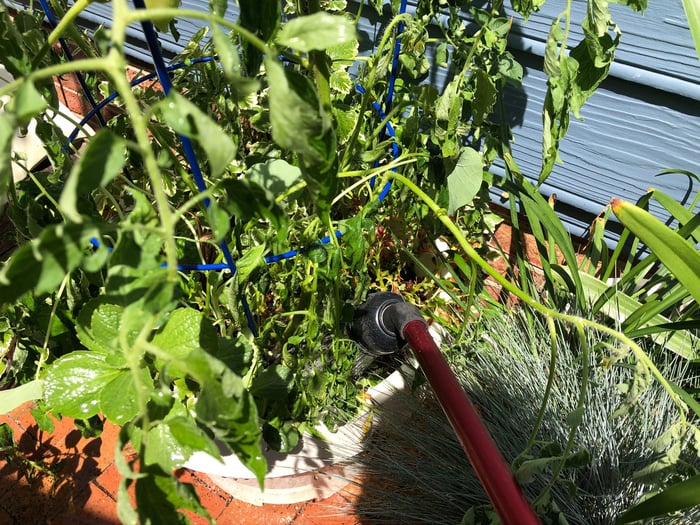
A rain wand is a great watering tool to help make sure you water the roots and not the leaves.
My approach is to investigate where the plant would naturally grow. If it lives in full sun in sandy soil, more than likely that is a plant that will do better in periods of extreme dry. To that point, this is also a major reason for investing more of your budget in quality compost to ensure your ground doesn’t dry out as quickly as it would otherwise.
I was in the early stages of building my second garden when the 2007 drought hit. At that time, I did not know about Soil³, and I watched as my newly planted landscape withered up and died after months of no rainfall. I vowed then, when I built a new garden, I would make soil improvement my top priority and I am proud to say that 13 years later I am still practicing that hard-learned lesson.
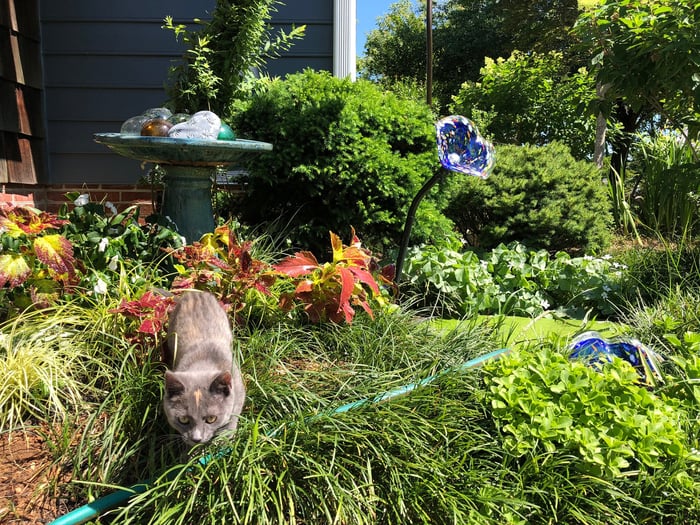
Ava the kitten stalking "snakes" (aka hoses) among the plants. This is why I like Dramm's colorful hoses - so I know it is definitely not a snake!
Soil³ compost is my insurance policy against drought. It holds enough moisture to keep plants alive even if my watering schedule is reduced to one or two days a week. This is especially true for established plantings, meaning anything that has been in the ground for more than 9 months. Generally seasonal annuals, like my beloved food crops, do not count as established, because they are rarely in the ground for more than 6 months at a time. They also require much more water than the trees, shrubs and perennials that provide the backbone of my landscape. So, in times of drought, as much as I hate this, I advise that you limit the space devoted to annuals and focus on growing things that won't require so much water - such as growing more okra and fewer tomatoes.
Low and Slow: The best advice I have for watering in a drought is to water with drip irrigation or soaker hoses and try to water as deeply as possible- meaning run your water with low pressure and for an extended period of time. This approach will help keep your plants alive during periods of dryness and reduces any possible runoff or evaporation.
It is also advised that you utilize water capturing systems such as rain barrels (though I find they don’t hold enough water for my needs in general) or cisterns, which I have long dreamt of adding to my garden but haven’t yet - maybe one day. It is important to note that in some communities cisterns are outlawed, so before you get too ambitious check your neighborhood, city, or county codes before you get committed to an expensive underground holding container!
Of course, there are a lot of water saving habits we could all adopt in general to help save the supply of water. For instance, don’t run the water while you are brushing your teeth, washing your face, or shaving. It seems obvious but I bet most of us are guilty of this. Back in 2007, I stashed 3 gallon buckets in my bathroom to collect water as I waited for my shower to heat up. I was shocked by how much water was wasted each time I showered and grateful to have those buckets to keep special plants growing through the prolonged dry spell.
What About Watering in Other Seasons?
Obviously this blog addresses summer-specific watering needs. Long days, heat, humidity and irregular rainfall all lead to you having to water more often. Additionally, the plants are actively growing, meaning they are absorbing more water, compared to seasons of dormancy. Of course all watering depends on your local weather systems. For instance, here in Raleigh I have been getting rain almost every night. But gardening friends 20 miles away are DRY. So the real idea here is you have to pay attention to what is literally happening outside your windows.
In contrast to summer watering habits, fall, winter, and spring require much less. Usually mid-September to mid/late October, as I am starting to remove summer crops and replacing with cool season veggies and flowers, my need for sprinklers has diminished.
During the autumn season I still may need to water - especially containers - but I am doing it primarily by hand. As winter approaches and the days are colder and considerably shorter I rarely water anything.
I keep short hoses near water sources so if I do need to fill a watering can I have easy access. One thing to consider is placing cool season containers in areas that have the wind blocked, as that will reduce your need for regular watering. But generally I don't use my typical garden hoses through winter as they are stiff and can explode if they freeze when temps drop dramatically.
Most plants are dormant through the winter, which means they do not need additional water. In fact, overwatering in winter can lead to plants dying. As spring rounds the corner and the plants wake up I start to get the hoses back into action. However, I only water if something is newly planted or showing signs of stress, a.k.a wilting. Until the temperatures start to consistently be over 85 degrees F you don't need to water every single day.
My general two cents on watering through-out the year:
- May-October: full steam ahead with hoses and sprinklers, unless it has rained;
- November-April: very limited, plant-by-plant watering by hand.
Watering 101
There is never going to be a one-size-fits-all solution for growing plants and watering is no exception. My best advice is simple: observe and react. Learn from your experiences and take notes.
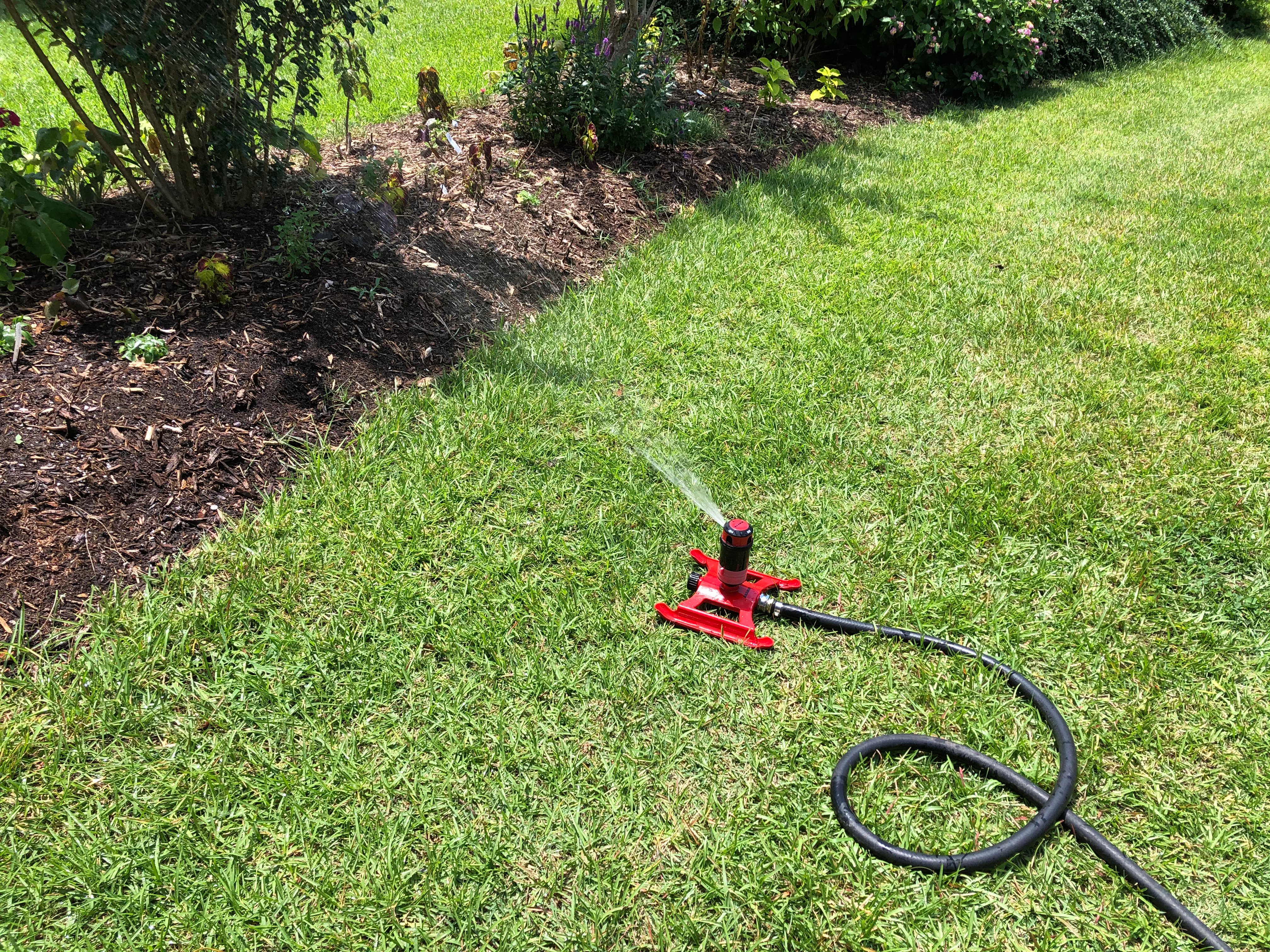 I have learned over the years that some plants are just “too much” for me. I have adopted a plant palette to represent the things that I am good at managing over the course of the summer. My top warm season plants include ornamentals like Cuphea, Coleus, and Plectranthus along with edibles such as peppers, okra, and squash. Those combinations work well for me, and over time, you can establish a list of your favorites too.
I have learned over the years that some plants are just “too much” for me. I have adopted a plant palette to represent the things that I am good at managing over the course of the summer. My top warm season plants include ornamentals like Cuphea, Coleus, and Plectranthus along with edibles such as peppers, okra, and squash. Those combinations work well for me, and over time, you can establish a list of your favorites too.
Overall, don’t get discouraged by the task of watering. Frequently I find myself multi-tasking: snapping photos, enjoying a cold brew, and catching up with neighbors all while I am out keeping my plants hydrated. And remember, most plants are far more resilient than we give them credit for. Even a wilted plant can be brought back to life.
Wishing you all the best. Stay happy, healthy and keep on growing!
Brie
All photos by Brie, except product images.
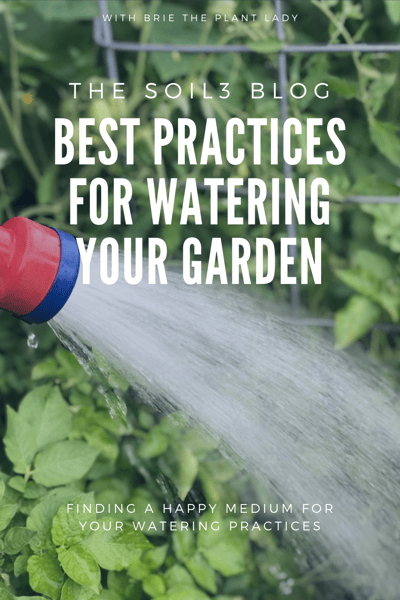
Related Posts

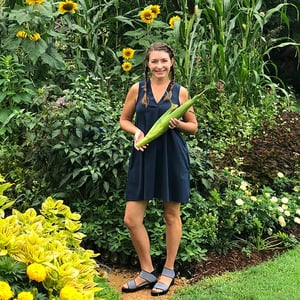
Summer Evaluations: 3 Success Stories with Soil3
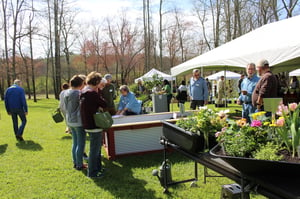
Creative Raised Bed Vegetable Garden Designs: Winners of the design contest at the Soil3 Garden Show
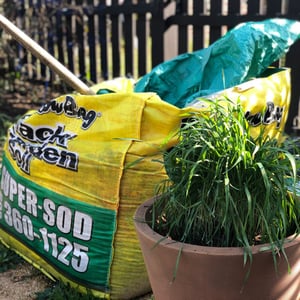
Planting Directly in Soil3
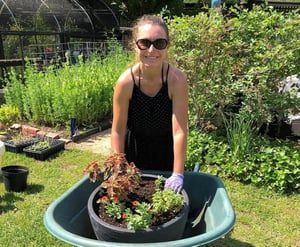
Summer Container Planting in Soil3
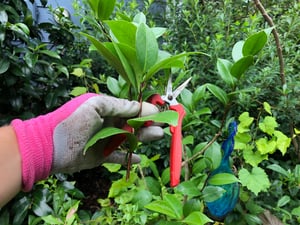
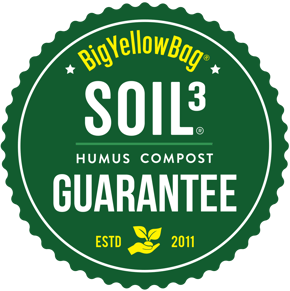
Did this help you out? Have any questions for clarity? Leave a comment below!